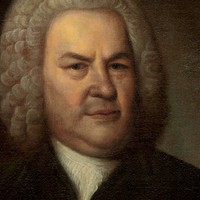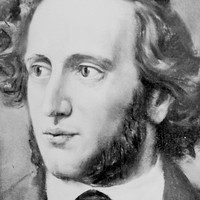Bach and Mendelssohn
Sponsored By
- December 5, 2015

Sponsored By


The incandescent musical language of Estonian composer Arvo Pärt has won him a global cult following, and from many corners. Violinist Gidon Kremer, one of Pärt’s most prominent champions, has praised his work as “a cleansing of all the noise that surrounds us.” Rock star Michael Stipe of R.E.M. fame has called Pärt’s music “a house on fire and an infinite calm.”
Pärt himself offers a more precise term to characterize his work: tintinnabuli, the tonal technique he developed in the late 1970s that has become the DNA of his language. The term—literally, “bells”—is named for the bell-like quality of a triadic chord (eg, C major: C–E–G). Technically: tintinnabuli constitutes a two-part texture, juxtaposing a melodic voice, moving primarily by step around a central pitch, and a tintinnabuli voice, which surrounds the melody with the notes of the tonic triad.
Per Pärt: “Tintinnabulation is an area I sometimes wander into when I am searching for answers – in my life, my music, my work. In my dark hours, I have the certain feeling that everything outside this one thing has no meaning. The complex and many-faceted only confuses me, and I must search for unity. What is it, this one thing, and how do I find my way to it? Traces of this perfect thing appear in many guises – and everything that is unimportant falls away. Tintinnabulation is like this.”
Though not his first work to use this technique, Fratres is perhaps the most emblematic (and is Pärt’s signature instrumental work besides; it has been featured prominently in numerous films, including Paul Thomas Anderson’s There Will Be Blood). Pärt originally composed the work in 1977 for twelve instruments, and thereafter adapted it for other ensembles. Unique to the present arrangement, the aural spatiality between solo violin and string orchestra creates a vast chasm; sustained string textures follow the soloist’s frenetic opening figurations, seemingly launching the listener into zero gravity. The sonic separation between bass drum and claves further expands the space.
The austerity of Pärt’s materials is not beyond analysis, but it ultimately points to a peculiarly mystical quality. This quality, in evidence throughout Fratres, is the essence of Pärt’s musical identity. The most precise assessment comes again from Pärt in extramusical terms: “I could compare my music to white light which contains all colours. Only a prism can divide the colours and make them appear; this prism could be the spirit of the listener.”
Patrick Castillo ©2015

Though three cantatas composed by Bach for the celebration of weddings survive, the especial beauty, dramatic power, and subsequent popularity of “Weichet nur, betrübte Schatten,” BWV 202, have earned it alone the “Wedding Cantata” handle. Little is known of the cantata’s genesis apart from its single manuscript copy placing the date of composition no later than 1730. Modern scholarship widely assumes the work to date from Bach’s years as Kapellmeister at Cöthen, during which tenure Bach produced a healthy share of his great instrumental chamber and orchestral works, including the cello suites, Brandenburg Concertos, and others. The Wedding Cantata may equally well have been penned in the mid-1720s, during Bach’s years in Leipzig, which would place it among the steady stream of sacred cantatas (not to mention the immortal Saint Matthew Passion) that Bach composed in his dual capacity as Cantor of St. Thomas Church and City Music Director. Neither theory is implausible, nor do we have a specific nuptial occasion to vouch for one over the other.
The cantata comprises nine movements, alternating arias and recitatives and ending with a buoyant gavotte. Throughout the work, Bach deploys his sonic forces—soprano, oboe, strings, and continuo—with exquisite imagination. Gracefully woven soprano and oboe lines begin the opening aria, illustrating the rising mist and budding spring flowers on the joyous day. “Phöbus eilt mit schnellen Pferden” (Phoebus hurries with rapid horses) features an aptly galloping continuo-only accompaniment. Bach conjures an inclement rumbling in the basso continuo to stir the final recitative just so (“May no waterfall or thunderclap frighten the impulse of love”) before “Sehet in Zufriedenheit” concludes the cantata with celebratory dancing.
Patrick Castillo ©2015

Though Mozart remains Western music’s most celebrated wunderkind, his adolescent accomplishments are outclassed by those of Felix Mendelssohn, who must be acknowledged as classical music’s greatest child prodigy. No less a cultural authority than Goethe, on first hearing the eleven-year-old Mendelssohn play, remarked on his abilities, “such as I never believed possible in one of his age.”
“And yet,” noted Mendelssohn’s teacher Carl Friedrich Zelter, “you heard Mozart in his seventh year.”
Goethe: “Yes, I was myself just twelve, and like everybody else was immensely astonished at his extraordinary cleverness. But what this pupil of yours accomplishes bears the same relation to the little Mozart that the perfect speech of a grown man does to the prattle of a child.”
And to wit, today we spend little time with anything Mozart composed before the age of 20, whereas Mendelssohn’s Octet, composed at 16, and A Midsummer Night’s Dream Overture, completed one year later, are acknowledged masterpieces of the Romantic—and, indeed, of any—era.
The Symphony in C Minor (originally inscribed “XIII,” following the twelve Sinfonias for strings, but ultimately published as his Symphony No. 1) is a lesser-known document of Mendelssohn’s luminescent youth. It was completed on March 31, 1824, when Mendelssohn was only fifteen years old. If the work does not yet bear the distinct voice of his Italian and Scottish Symphonies, the C Minor nevertheless demonstrates the technical maturity on which those more fiercely original works would be built.
Mozart is the immediate model for this Symphony; the opening Allegro di molto, notwithstanding its timpani-and-brass-fueled Sturm und Drang, reflects the young Mendelssohn’s absorption of Mozart’s formal elegance. The specter of Bach, the composer whom Mendelssohn most revered, likewise haunts the Symphony, most clearly in the fugal passage in its finale. The second movement Andante, despite being the Symphony’s shortest movement, is arguably its finest, featuring a lyricism buoyed by deftly woven instrumental textures.
The Symphony No. 1 was first heard on November 14, 1824, at one of the Mendelssohn family’s private musicales, to celebrate Fanny Mendelssohn’s nineteenth birthday. Its public premiere was given in 1827 by the Leipzig Gewandhaus Orchestra. Mendelssohn later conducted a performance with the Royal Philharmonic Society in London on May 25, 1829, on which occasion he substituted an orchestral version of the Scherzo from his Opus 20 Octet for the third movement.
Patrick Castillo ©2015
Get driving directions and find nearby parking.
Find dining options close to the venue.
View seating charts to find out where you'll be seating.
Get driving directions and find nearby parking.
Find dining options close to the venue.
View seating charts to find out where you'll be seating.
